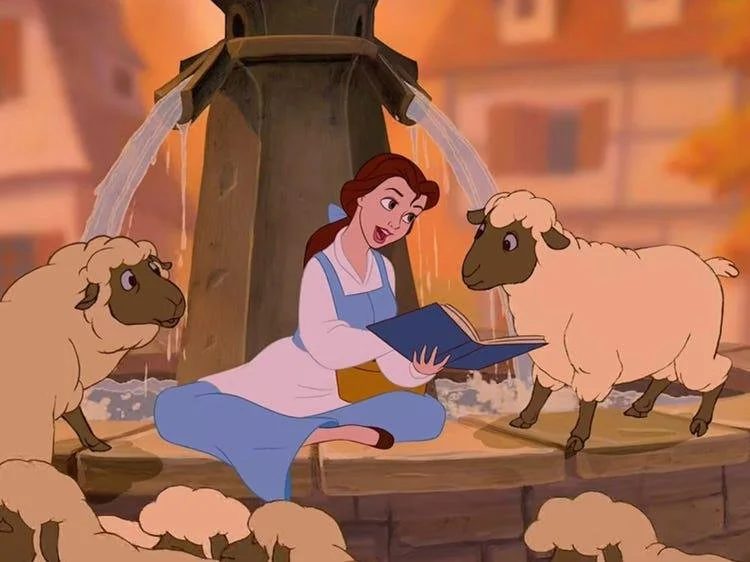HOW BELLE’S LOVE OF READING SAVED THE BEAST
by Muneera Alfadhel
“Beauty fixes beast” is a trope as old as time (pun fully intended), but I want to explore, and perhaps challenge, the plausibility of the classic tale of Beauty and the Beast; particularly with the beloved 1991 animated Disney film in mind. Yes, I know we’re talking about a fairytale with witches and talking tableware, but hear me out.
I like to surrender myself fully to a story’s internal logic; that’s the only way to consume fiction. Now, imagine being kidnapped by some slobbering, towering, monstrous animal. Not enchanting, not mysterious. Just purely predatory and terrifying. (Side-note: Just to put this into perspective, because I have a soft spot for the Beast’s cartoon appearance, I try to get myself to envision more of a Bill Skarsgård-as-Nosferatu-looking captor.) It’s safe to assume you’d feel pure horror and disgust, and probably an overwhelming anticipation to get the heck out of that situation. And as much as we’d like to think we would, little of us would consider the possibility of the captor simply being the bearer of a tortured soul. And yet Belle somehow gets there.
Depictions of The Beast From left to right: in Disney’s 1991 adaptation, by William Mulready (1811), from an 1852 publication, by Walter Crane (1874), by Eleanor Vere Boyle (1875), Jean Marais in Jean Cocteau’s 1946 film, Vlastimil Harapes in Juraj Herz’s 1978 film, Klaus Kinski in Faerie Tale Theatre: Beauty and the Beast (1984) , Alex Pettyfer in Beastly (2011), Bill Skarsgard in Nosferatu. (Sources: Disney, Dartmouth, Town & Gown, Universal Pictures & Focus Features, Lionsgate Films, Studio Chizu.)
Stockholm syndrome? Probably. But still, it was no small leap to fall for a literal sharp-clawed monster. But honestly? It made sense for Belle of all people to take that leap. She was a reader who immersed herself in a world of fiction; ‘Well it’s my favorite,’ she says of a regularly-borrowed book. ‘Far off places, daring sword fights, magic spells, a prince in disguise.’ Concrete evidence that Belle is a fantasy girl. As is commonly noted, readers experience a million lives, and transcending an often-mundane reality is their every day. And in spite of living the same day over and over again in a provincial town, she experiences worlds of magic and fantasy in between through works of fiction.
So when it comes to the Beast, Belle’s mind does not implode within itself at the thought of something beyond what the eye can see. This comes to light in a pivotal moment when she sings ‘Something There’, particularly in the line: ‘I wonder why I didn’t see it there before’ referring to the Beast’s newly-coming-to-light softness. Her first instinct was to point her finger at herself for not being able to see the Beast past his surface from the beginning.
Even going back to Jeanne-Marie Leprince de Beaumont’s original 1756 version of the story, Beauty was noted to have ‘spent the greatest part of her time in reading good books.’ With that in mind, her literary soul is an integral part of the narrative. It’s the most logical way for this unconventional love to exist. Being a bookworm equipped Belle with the compassion the Beast needed her to have to look beyond his surface, unbinding her from conventional portrayals of romance, and allowing her to find love in a place where no one would’ve dared to consider.












